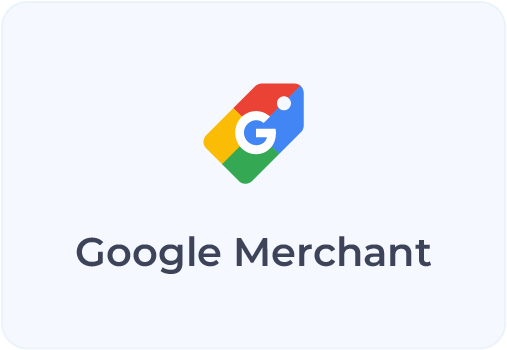Pricing is one of the most powerful levers an ecommerce business can pull. It impacts conversions, profitability, and market competitiveness. But in today’s fast-moving environment, static pricing models are no longer enough. Consumer demand shifts, competitors adjust their prices in real time, and external factors like seasonality and inflation influence purchasing behavior. What is dynamic pricing though?
By leveraging automation and real-time data, businesses can adjust prices strategically — ensuring they remain competitive while maximizing revenue.
What is dynamic pricing
Dynamic pricing is a strategy that automatically adjusts prices based on factors like demand, competitor pricing, and inventory levels. Unlike static pricing, which remains fixed for long periods, dynamic pricing adapts in real time to ensure optimal price positioning.
Industries like travel and hospitality have used dynamic pricing for years. Airlines, hotels, and ride-sharing apps adjust prices based on demand fluctuations. Now, ecommerce businesses are using the same approach to optimize sales and profit margins.
How dynamic pricing works
Dynamic pricing relies on automation, AI, and real-time data analysis. Businesses use dynamic pricing software to evaluate competitor pricing, demand trends, inventory levels, and customer behavior. Instead of manually updating prices, pricing tools analyze market conditions and adjust accordingly, ensuring businesses never price too high when demand is low or too low when demand surges.
For example, if a competitor drops their price on a popular product, the right pricing tool can respond immediately, adjusting your price to maintain competitiveness. If inventory is running low, pricing can increase slightly to protect margins while maximizing revenue. The result is a more strategic approach to pricing that aligns with business goals.
Benefits of dynamic pricing
For businesses looking to scale efficiently, dynamic pricing provides multiple advantages. It helps maximize revenue by ensuring prices align with real-time market conditions. Instead of setting fixed prices and hoping they remain competitive, live priving allows businesses to respond instantly to changes in demand and competition. This means prices remain optimized without requiring constant manual oversight.
Another major advantage is improved conversion rates. When pricing aligns with customer expectations and market trends, businesses are more likely to capture sales at the right price point. Higher conversions lead to better ad efficiency and return on investment, making dynamic pricing a crucial tool for ecommerce success.
Common dynamic pricing strategies
Businesses can use dynamic pricing in different ways depending on their goals. Competitor-based pricing ensures that pricing remains competitive by adjusting based on rival sellers. Demand-based pricing takes into account consumer interest, raising prices when demand is high and lowering them when demand softens. Time-sensitive pricing adjusts prices based on seasonal trends, peak shopping hours, or limited-time offers. Customer-segmented pricing allows businesses to tailor prices to specific groups based on shopping behavior, while inventory-based pricing adjusts pricing according to stock levels, discounting slow-moving items and raising prices on limited-stock products.
Each of these strategies can be implemented individually or combined for a more effective pricing approach.
Challenges and risks of dynamic pricing
While demand-based pricing offers clear benefits, it also presents some risks if not managed correctly. Frequent price adjustments can trigger price wars, where businesses continuously lower prices in an attempt to outbid competitors. This can erode profit margins and create a race to the bottom. To avoid this, businesses should set pricing floors to protect profitability.
Another challenge is managing customer perception. If prices fluctuate too often, shoppers may lose trust in pricing fairness. Retailers need to ensure that price adjustments feel natural and justified. Additionally, regulatory considerations exist in some industries, meaning businesses must remain compliant with fair pricing guidelines.
To mitigate these risks, companies implementing dynamic pricing should set guardrails, define minimum and maximum pricing limits, and continuously analyze performance to refine their approach.
How to implement dynamic pricing successfully
For businesses looking to adopt dynamic pricing, the key is balancing automation with strategy. The first step is selecting the right pricing technology. Dynamic pricing platforms provide AI-driven dynamic pricing solutions that integrate with ecommerce stores, ensuring prices adjust in real time based on market conditions.
Setting pricing thresholds is essential. Businesses should establish minimum and maximum price points to prevent extreme fluctuations that could damage brand perception. Monitoring performance regularly ensures that price changes lead to the desired outcomes, such as increased sales or higher profit margins. Testing different pricing models helps businesses refine their approach, ensuring they strike the right balance between competitiveness and profitability.
A successful dynamic pricing strategy isn’t about constantly changing prices—it’s about making the right adjustments at the right time to maximize revenue and maintain customer trust.
Conclusion: The future of pricing is dynamic
Ecommerce businesses that rely on static pricing risk falling behind. Dynamic pricing ensures businesses stay competitive, maximize revenue, and respond effectively to market shifts. By using automation, real-time data, and pricing optimization tools, companies can fine-tune their pricing strategy without excessive manual effort.
Pricing is no longer just about setting a number—it’s about continuously refining the right number based on customer demand, competition, and profitability goals.
Want to optimize your pricing strategy? Learn how Intelis can help automate and refine your dynamic pricing approach to maximize sales and profitability.






